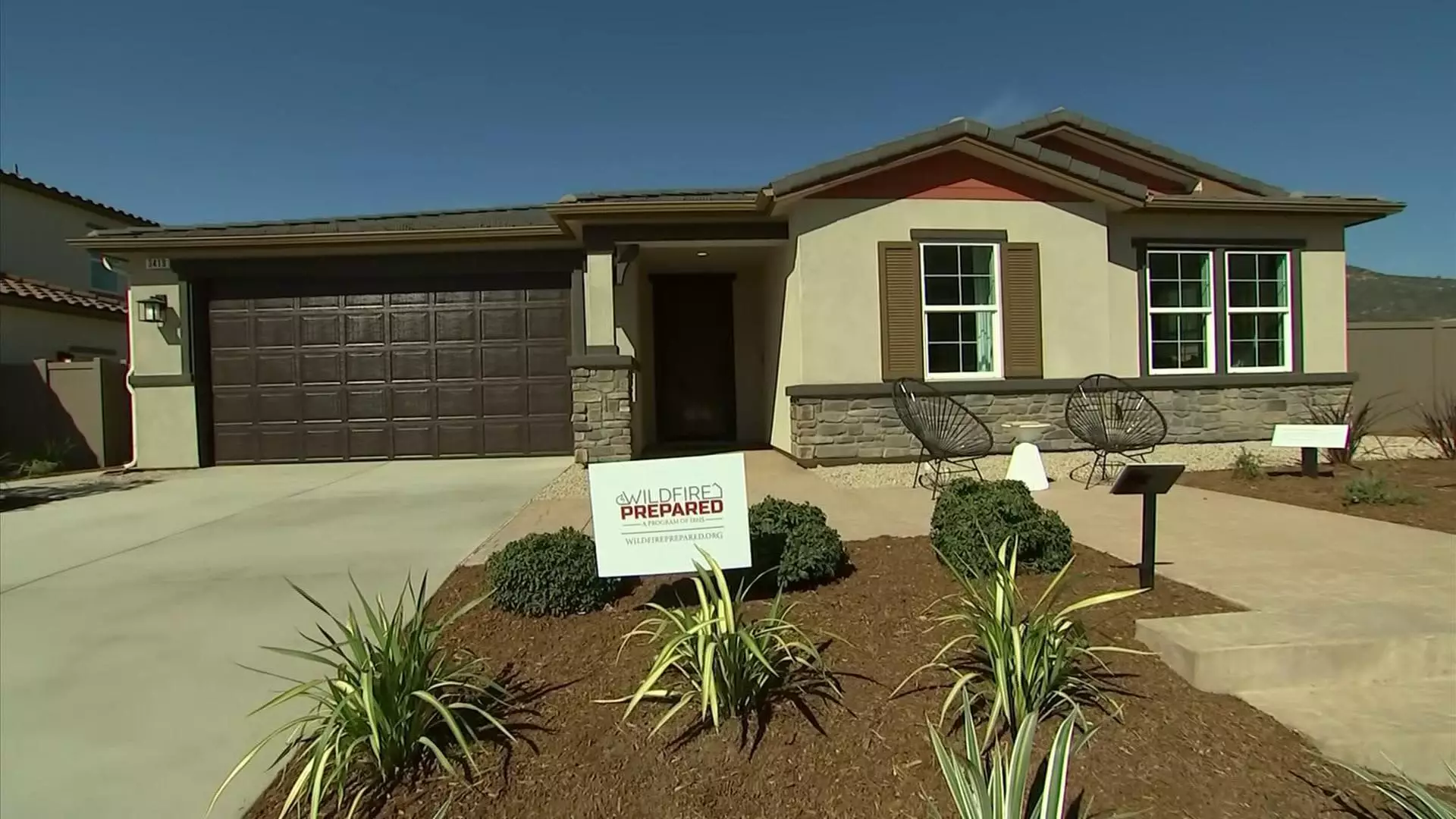64 Fire-Resistant Homes: A Controversial Step Toward California’s Future

In the wake of devastating wildfires that have ravaged countless homes across California, KB Home has taken a bold, if debatable, step by unveiling its innovative “wildfire-resilient” community in Escondido, just outside of San Diego. The introduction of 64 single-family homes designed strictly according to standards set by the Insurance Institute for Business & Home Safety (IBHS) is marketed as a proactive solution to a growing threat. However, while the intentions are undeniably good, one must critically assess whether these homes genuinely represent a significant advancement in safeguarding communities or merely a calculated business strategy masquerading as altruism.
The development seeks to protect against the three primary sources of wildfire ignition: flying embers, flames, and radiant heat. Though the concept sounds appealing, we must question if the features outlined—such as covered gutters, enclosed eaves, and tempered glass windows—are enough to genuinely protect inhabitants. These components may embody a step in the right direction, yet they reveal a troubling narrative: are we merely slapping Band-Aids on an ever-deepening systemic issue? The fire resiliency features of the homes raise the question of whether they fully address the infrastructural vulnerabilities and environmental factors that led to the catastrophic wildfires in the first place.
Cost vs. Safety: A Flawed Equation
KB Home’s selling point is the supposed affordability of these homes, a crucial element given California’s soaring real estate prices. However, with homes reportedly priced in the low millions—suggesting a target market of move-up buyers rather than first-time homeowners—one must wonder if safety is being sold at an inflated price tag. It’s almost ironic that in a time of dire need for fire-resilient housing, affordability seems to take a backseat to profit margins. The complexity of creating homes that aren’t just safe but also financially accessible to the average Californian reflects a broader issue in the real estate market: a chronic disconnect between urgent community needs and corporate profit motives.
Ruffner’s admission that incorporating these fire-resistant features required rapid architectural changes alludes to a larger pattern of reactive planning. The idea that these homes will become the new norm brings about optimism, yet it also raises skepticism about the sustainability and execution of such a plan. If these homes truly function as a “research and development project,” then how exactly does this align with the urgent housing crisis precipitated by climate-induced threats? One can’t help but wonder whether this ambitious venture into resilience is striking a balance between corporate innovation and public safety, or if it is more of a superficial fix.
Insurance Dilemmas and Market Responses
In a state where insurance companies are increasingly withdrawing, KB Home’s efforts might also serve to create a new breed of insurable property. Roy Wright of IBHS notes that the design aims not only to protect but also to attract insurers back to California’s market. This plea for sustainability is likely to resonate; however, the fear that these homes may be the last line of defense makes it crucial for local governments and developers alike to find a more comprehensive solution to fire safety within community planning efforts.
The crux of the issue lies in the underlying dynamics of land management and urban planning that have long been neglected. Insurers may cautiously reinvest in homes built with fire-resistant materials, but they will still grapple with the reality of unpredictable climate-related catastrophes. The focus should not only be on improving home safety measures but also on implementing preventative strategies in terms of environmental maintenance and community development. Flawed policies that allowed for reckless development in high-risk areas must not be overlooked in the murmurs of reconstruction, especially if we’re to break the cycle of destructive wildfires in California.
Future Implications and Accountability
Despite the well-intentioned features of this new community, we are left with lingering questions. What happens when the fire-resilient design is put to the test? Can these homes withstand an actual wildfire scenario? The technology is unproven, and while Wright suggests that they serve as a “test bed,” it feels risky to pin hopes on a lifestyle brand of housing that could quickly crumble under pressure.
As climate change exacerbates the frequency and severity of wildfires, merely selling safety won’t suffice. Perceptions of security should not lead us to drop our guard but rather inspire further advocacy for meaningful policy reformation, sustainable development practices, and community awareness campaigns. If the goal is to provide safe living environments amidst the chaos wrought by climate change, then truly, KB Home’s endeavor must become a call to action for every builder, homeowner, and policymaker in the state.
The concept of fire-resilient homes is compelling, but without systemic change, we might end up constructing beautiful coffins wrapped in safety rhetoric.





